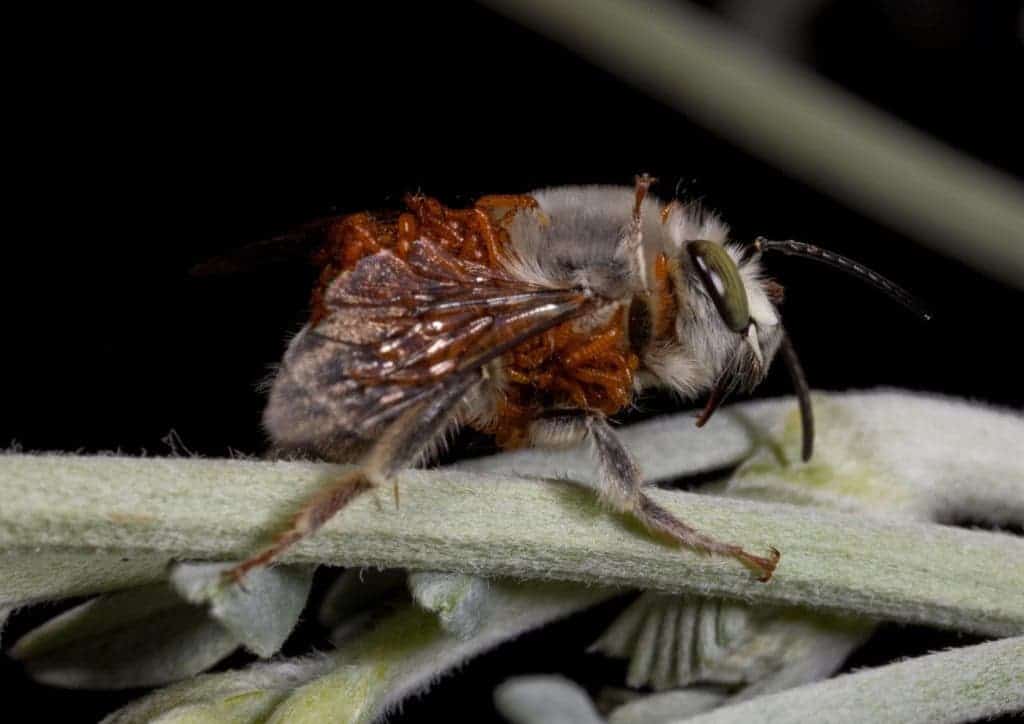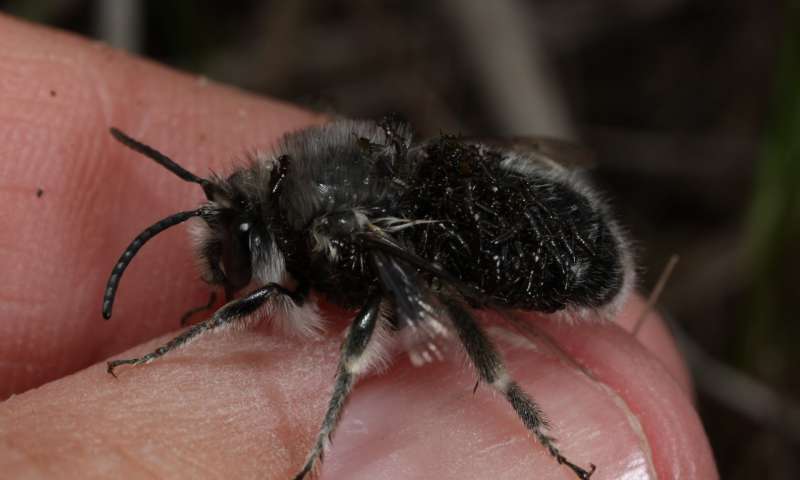
A male digger bee (Habropoda pallida) from the Mojave Desert covered with Meloe franciscanus triungulins (larvae). Credit: Leslie Saul-Gershenz.
Sometimes, nature is simply ruthless. Meloe blister beetles might look like your ordinary flightless insects but don’t let their appearance deceive you — these are the ultimate freeloaders, and they will employ the slyest tricks to access resources. According to a recent study, these masters of deception adapt their arsenal of tricks to their bee hosts, which includes mimicking pheromones and cruising altitude.
The siren scent
Certain, more solitary, bee species rely on pheromones to find a mate, and the blister beetle couldn’t be more happy with that fact. The larvae of Meloe franciscanus, which hatch in the hundreds at a time, lure in male digger bees by generating chemical signals that mimic female sex pheromones. Once the males are in proximity, the larvae hitch a ride on the backs of the bees until they encounter a female. During copulation, the larvae switch and tag along with the female until they’ve infiltrated the nest. Here, they feed on the pollen, nectar, eggs, and bee larvae themselves, until they’re ready to emerge as adult beetles the following winter.
Saul-Gershenz, a graduate student in entomology at UC Davis, and colleagues studied the parasitic behavior in two related but geographically separate species of bees: Habropoda pallida from California’s Mojave Desert and H. miserabilis from the coastal dunes of Oregon.
The researchers found that the beetles produce pheromones made by females bees, some of which are not found in the scent given off by male bees. What’s interesting is that the pheromones produced by local beetles that parasitize Mojave bees did not attract male Oregon bees. Likewise, Mojave bees ignored the pheromones released by larvae which typically target Oregon bee males.
“Male bees of both species were more attracted to local parasite larvae than larvae from the distant locale because the larvae tailored their pheromone-mimicking blends to the pheromones of their local hosts,” Saul-Gershenz said in a statement.
That’s not all. The two different species of bees cruise at different heights when looking for a mate — about 35 cm above the ground in the desert and 10 cm above the beach. This behavior is hardwired into the bees as Oregon bees which were moved to the desert buzzed about the same altitude.
The beetles responded to this tendency as well, with larvae climbing to the appropriate height for each type of bee before releasing their pheromones.
It’s all a fascinating example of relatively rapid evolution via local adaptation of a parasite species to different hosts.
“The larvae cooperate with their siblings for a brief period; they mimic the pheromone of their hosts; they are locally adapted to different hosts both chemically and behaviorally; and their emergence times are plastic across their geographic range. It has been fantastic to unravel this species’ puzzle,” she said.










